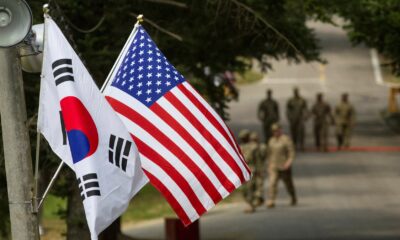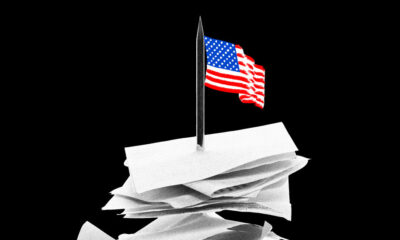News
Mike Pence Blames Trump Tariffs As John Deere Cuts 238 Jobs In Iowa: ‘Time To Get Back To Free Trade With Free Nations’

### Pence Blasts Trump Tariffs After Deere Slashes 238 Iowa Jobs
What’s Happening?
Mike Pence has criticized former President Donald Trump’s tariff policies following Deere & Co.’s decision to cut 238 jobs across its Iowa factories. The agricultural giant cited tariffs and falling commodity prices as key factors behind the layoffs.
Where Is It Happening?
Iowa, specifically at Deere & Co.’s three manufacturing plants in the state.
When Did It Take Place?
The layoffs were recently announced, signaling an immediate impact on the local workforce.
How Is It Unfolding?
– Deere & Co. attributes the job cuts to trade tensions and declining commodity prices.
– Mike Pence publicly criticizes the tariff policies implemented during Trump’s administration.
– Iowa’s agricultural sector braces for further economic ripple effects.
– The move highlights the broader debate on the impact of trade policies on manufacturing jobs.
Quick Breakdown
– **Layoffs**: 238 workers in Iowa hit by Deere’s downsizing.
– **Reason**: Tariffs and lower commodity costs impact profits.
– **Criticism**: Pence argues for a return to free trade with allied nations.
– **Impact**: Local economy in Iowa likely to feel the effects.
Key Takeaways
Deere & Co.’s decision to cut 238 jobs in Iowa underscores the real-world consequences of trade policies. Pence’s criticism of Trump’s tariffs adds fuel to the ongoing debate about free trade versus protectionism. For Iowa and other agricultural hubs, the job losses highlight the vulnerability of manufacturing to global trade fluctuations. The situation serves as a microcosm of the broader economic tensions between boosting domestic industries and maintaining international trade relationships.
Trade policies should unite, not divide, us with our closest allies. The Deere layoffs are a reminder that protectionism often comes at a human cost.
– Mike Pence, Former U.S. Vice President
Final Thought
The layoffs at Deere & Co. signal a deeper economic challenge: balancing trade policy with job security. Pence’s critique of Trump’s tariffs opens a necessary dialogue, but real solutions must address both the protection of domestic industries and the need for global economic collaboration. The workers affected are the real casualties in this policy debate, reminding all of us that economics isn’t just about numbers—it’s about people.














